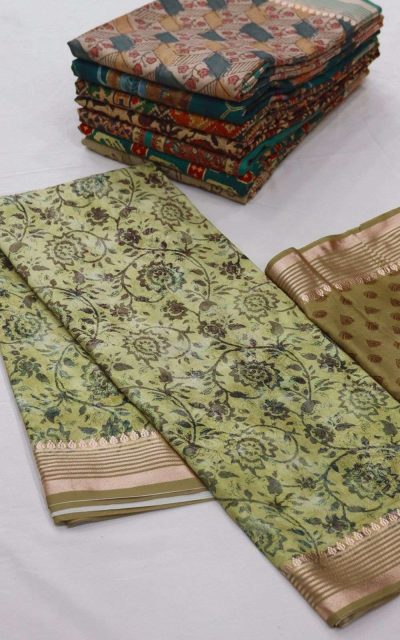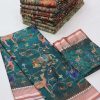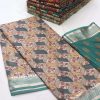Rajyog 03 Kanchi Silk Green Unstiched Viscose Saree
₹ 1,200 + G.S.T Extra
| Weight | 1 kg |
|---|---|
| SAREE | VISCOSE |
| COLOR | Green |
| SIZE | UNSTICHED |
| BRAND | RAJYOG |
| GENDER | FEMALE |
| PUBLISHED ON | APR 17, 2023 |
Rajyog 03 Kanchi Silk Green Unstiched Viscose Saree
Material & Care
Dry Clean/Machine Wash
The journey of sari began with cotton, which was first cultivated in the Indian subcontinent around 5th millennium BC. The cultivation was followed by weaving of cotton which became big during the era, as weavers started using prevalent dyes like indigo, lac, red madder and turmeric to produce the drape used by women to hide their modesty.
The garment evolved from a popular word ‘sattika’ which means women’s attire, finds its mention in early Jain and Buddhist scripts. Sattika was a three-piece ensemble comprising the Antriya – the lower garment, the Uttariya – a veil worn over the shoulder or the head and the Stanapatta which is a chest band. This ensemble can be traced to Sanskrit literature and Buddhist Pali literature during the 6th century BC. The three piece set was known as Poshak, the Hindi term for costume.
Women traditionally wore various types of regional handloom saris made of silk, cotton, ikkat, block-print, embroidery and tie-dye textiles. Most sought after brocade silk sarees are Banarasi, Kanchipuram, Gadwal, Paithani, Mysore, Uppada, Bagalpuri, Balchuri, Maheshwari, Chanderi, Mekhela, Ghicha, Narayan pet and Eri etc.
To Buy WHOLESALE CATALOGUES Of Pakistani Suits, Salwar Kameez, Kurtis, Sarees, Lehengas, Gowns, Palazzo | Pants | Leggings, Mens Wear. Night wear | Lounge Wear, Dupattas, Hijab, Burqa Please Click This Link.












